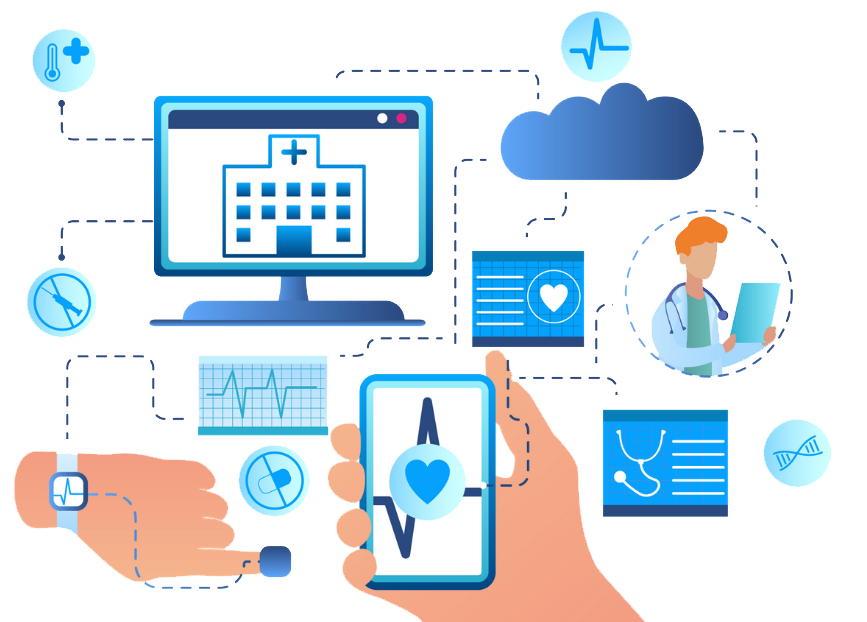- Media
- Blogs

How Can Big Data in Medical Research Eliminate Health Disparities?
Paicon
August 8, 2023
9 min read
Health disparities refer to potentially avoidable systematic differences in health between disadvantaged and advantaged social groups, which are mainly determined either socially and/or economically [1]. This definition excludes voluntarily assumed risks- such as recreational sky divers, pure chance- such as a pure genetic mutation and life stage differences- such as age differences. Health disparities imply non-random or non-equal distribution of health achievements and access to healthcare depending on different factors such as gender, race/ethnicity and/or socio-economic status [2]. Such disparities in health outcomes or health status are clinically and statistically observed and measured between groups [3]. It is called health disparity instead of health differences since a difference becomes a disparity when some subgroups in a population are given access to healthcare resources while others not [4].
Disadvantaged social groups here refer to groups of people not only having different social positions according to their power, wealth and/or prestige but also socio-economically disadvantaged people based on racial or ethnic minorities [1, 5]. Compared to advantaged social groups, disadvantaged social groups systematically experience worse health or worse access to health [1]. This increases unfairness and unjustness as it decreases opportunities for people who are at a disadvantaged position in society to escape from their disadvantaged positions because of having worse well-being and health status, compared to the advantaged social groups. Therefore, good health status and well-being are needed to overcome such disadvantaged positions in society [6].
Different health policies can affect the extent of health disparity which depends on many factors, such as population, socio-economic status, gender, race and/or ethnicity. However, what should be done to maintain health equity, is “… ideally everyone should have a fair opportunity to attain their full health potential and, more pragmatically, that no one should be disadvantaged from achieving this potential, if it can be avoided” [1]. One way to eliminate health disparity arising from different socio-economic status, gender, wealth, and race/ethnicity is to increase health equity by measuring health disparities and taking necessary actions in science, technology, and policy.
Achieving health equity and reducing health disparities require in-depth research, especially to determine the causes of health disparities. Health disparities may be caused by a patient, healthcare providers, system-related factors such as different treatments or societal inequities as described above [3]. It is possible to ensure effective and efficient policies for reducing or preventing health disparities, by truly determining causes of health disparities in a society. Determining its true cause requires data which can measure health outcomes for those who have systematically and observably been exposed to worse healthcare.
Scientific and technological advances have improved healthcare services, but disadvantaged groups continue to experience disproportionately acute and chronic health diseases due to health disparities [7]. These disadvantaged groups here include women, socio-economically disadvantaged people, racial or ethnic minorities, referred as underrepresented groups.
They are called underrepresented groups because even starting from data collection process and clinical trials, some subgroups are underrepresented. This lack of diversity in medical data might lead to reduce the opportunities for finding out effects, potentially specific to those underrepresented groups [8, 9].
Big data is promising for improving health equity as it has the potential to transform biomedical science. The quality and quantity of big data is dynamically increasing, and it is much easier to collect data from various sources, e.g., different countries and most importantly, measurements from analytical methods [7]. Therefore, big data can help in reducing health disparities in the population, by collecting data from underrepresented groups, increasing generation of health records, and promoting different analytic methods.
Big data in healthcare sector can be collected from various resources such as wearable sensor devices, mobile devices, electronic health records (EHRs), videos, clinical notes, radiology images, mobile apps, social media, blogs, health monitoring devices, genomic and pharmaceutical data, telemedicine etc. [10, 11]. Such rich data collection resources enable scientists to analyze changes in patients’ behavior and related health outcomes, resulting in the identification of high-risk patients, thereby promoting precision medicine by means of diversity in patients and their heterogenous responses to treatments.
As defined in the literature, big data has six distinct characteristics, including volume, velocity, variety, veracity, value, and valence. Volume is about having a tremendous amount of data generated every second of the day. Velocity is about fast data generation and fast data transfer from one port to another port. Variety is about having increasingly different forms of data such as image, text, video etc. Veracity is about data with different qualities. Value is about extracting a real-time value from the data. Lastly, valence is about how well big data can bond with each other and form connection between otherwise distinct datasets [10, 12].
With the above-mentioned characteristics of big data, it is possible to come up with policies for reducing or eliminating health disparity and improving health equity by being able to include everyone with its enormous amount of data. In this regard, big data offers a lot of opportunities related to health equity, which are discussed below [7, 13, 14].

